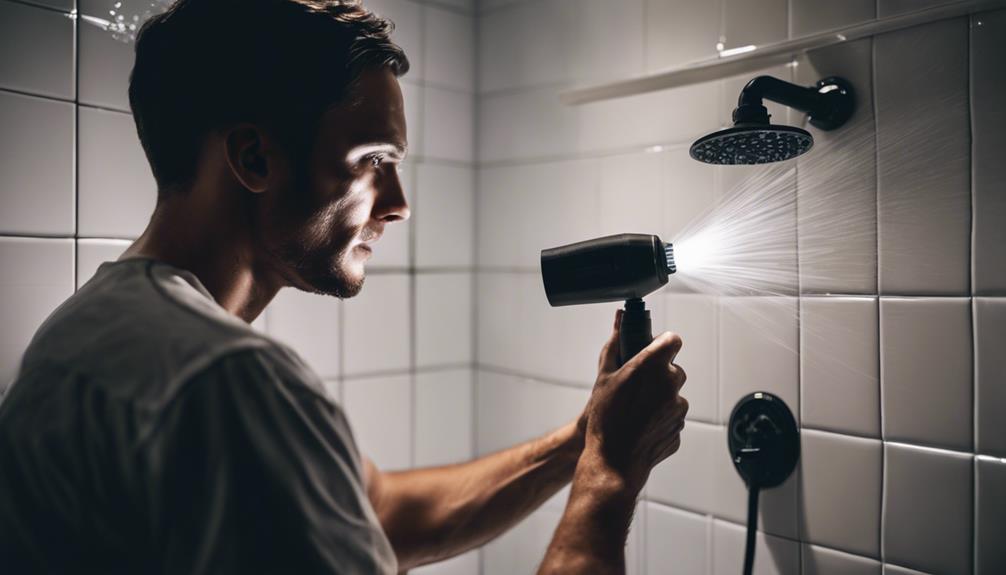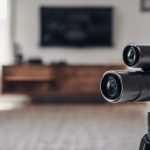Examine your shower meticulously with a high-powered flashlight, focusing on hidden spots and reflective surfaces. Check behind mirrors and look for unusual reflections or tiny lenses. Inspect the shower curtain, drain, and shower head for irregularities. Consider using infrared detectors to spot electronic devices. Employ hidden camera detectors to sweep the area for electronic frequencies. Understand the various spy camera types and detection methods. Conduct regular physical checks and use RF detectors to guarantee privacy and security. Master these techniques to safeguard your personal space against potential privacy breaches. Enhance your knowledge to maintain security in your shower.
Visual Inspection Techniques
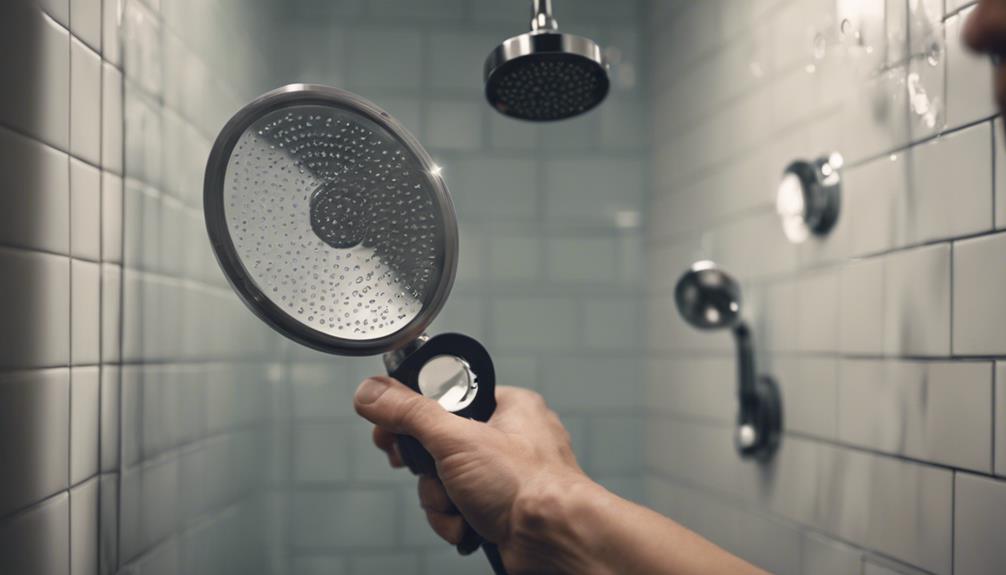
To effectively conduct a visual inspection for spy cameras in your shower, begin by meticulously examining all potential hiding spots using a high-powered flashlight. Check behind any mirrors, as they can sometimes contain hidden cameras. Reflective surfaces, such as mirrors, provide ideal hiding places for cameras due to their ability to blend in seamlessly with the surroundings. Use the flashlight to look for any unusual reflections or tiny lenses that might indicate the presence of a hidden camera.
Moreover, consider using infrared detectors to scan the area for any electronic devices that might be transmitting signals. Spy cameras often use infrared technology for night vision capabilities, making them detectable with the right equipment.
Additionally, pay attention to any fluctuations in temperature or steam detection in the shower area, as these changes could signify the presence of a hidden camera. By carefully examining these key areas with a methodical approach, you can increase the chances of detecting any covert surveillance devices in your shower.
Physical Search Methods
Examine all physical surfaces in the shower area methodically and meticulously to uncover any potential hidden spy cameras. Start by checking the shower curtain for any irregularities or small protrusions that could indicate a hidden camera.
Proceed with a detailed tile inspection, focusing on grout lines and corners where a tiny camera could be concealed. Confirm all tiles are firmly in place and there are no gaps that could hide a camera lens.
Next, inspect the drain for any unusual objects or devices that shouldn't be there. Use a flashlight to illuminate the area and look for any reflections that might indicate a hidden camera.
Additionally, examine the shower head closely, checking for any alterations or additions that could house a camera.
Utilizing Detection Devices
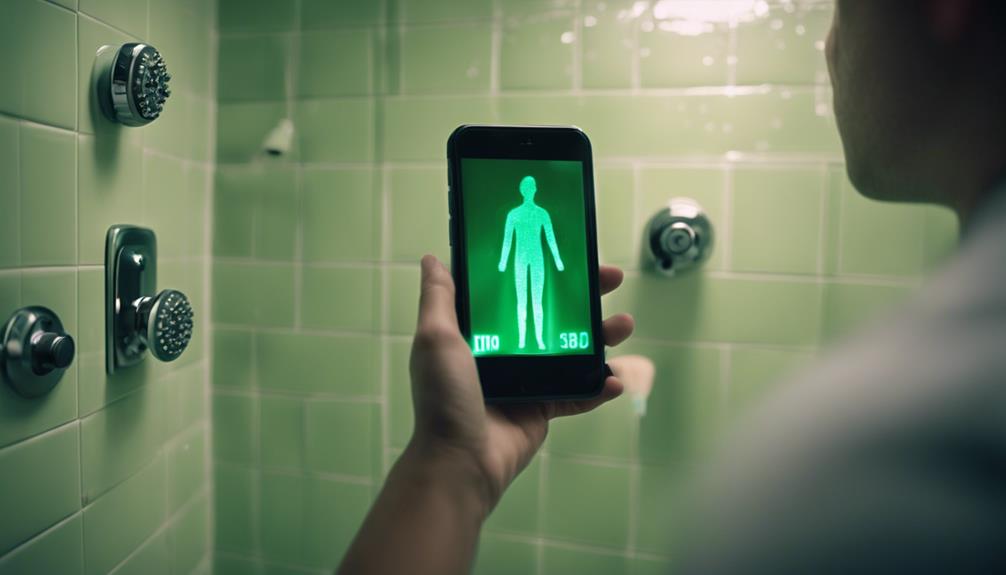
Consider employing specialized detection devices to enhance your search for spy cameras in the shower area. Hidden camera detectors are specifically designed to identify electronic frequencies emitted by recording devices. These detectors can help locate hidden cameras that may compromise your shower privacy.
When using a hidden camera detector, it's essential to sweep the shower area thoroughly, focusing on areas where a spy camera could be hidden. Start by turning off all electronic devices in the vicinity to reduce interference. Slowly move the detector around the shower, paying close attention to any unusual signals or beeps that could indicate the presence of a hidden camera.
It's important to remember that hidden camera detectors vary in their sensitivity and range, so familiarize yourself with the specific features of your device to maximize its effectiveness. Regularly check and calibrate your detector to ensure accurate results in your quest to safeguard your shower privacy.
Understanding Camera Technology
Understanding how spy cameras operate and the technology behind them is essential in effectively detecting and countering potential privacy breaches in your shower area. Spy cameras come in various types, including hidden cameras, pinhole cameras, and even cameras disguised as everyday objects. These cameras can be difficult to detect due to their small size and inconspicuous appearance.
When it comes to detection, you can use specialized devices that can detect wireless signals emitted by these cameras. Understanding camera placement is also vital. Spy cameras are often strategically positioned in locations where they can capture compromising footage without being easily noticed.
Hence, it's important to thoroughly inspect your shower area for any unusual or out-of-place items that could potentially house a hidden camera. Identifying these cameras requires a keen eye for detail and a systematic approach to checking all possible hiding spots.
Ensuring Privacy and Security
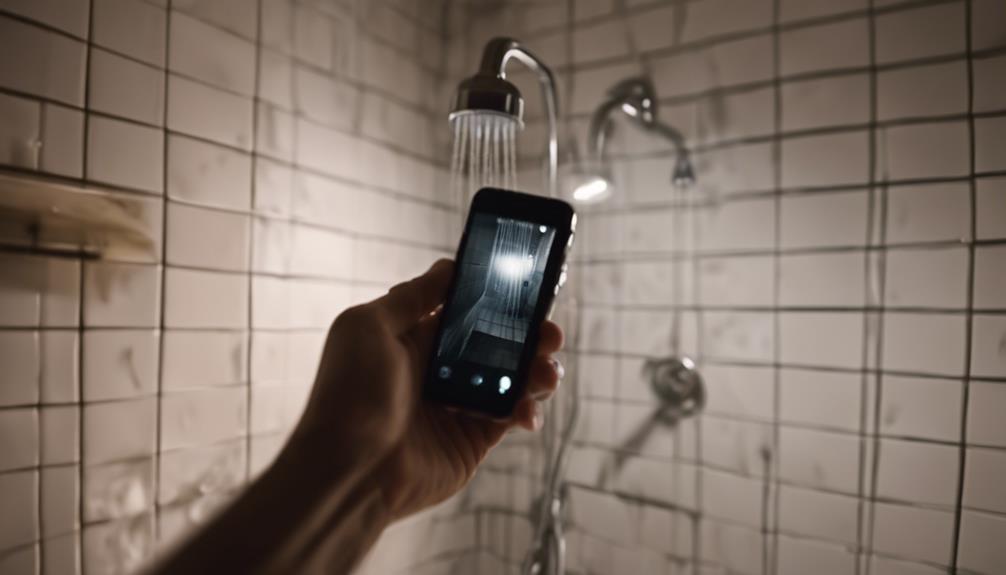
To safeguard your privacy and security in your shower area, implementing robust counter-surveillance measures is crucial. Privacy concerns in the shower are significant, given the intimate nature of the space.
Start by conducting regular physical checks in the shower area for any unusual or out-of-place objects. Look for small holes, unusual wires, or camera lenses hidden discreetly. Consider using a radio frequency (RF) detector to scan for any transmitting devices that may be present. These detectors can identify wireless signals that spy cameras often use to send captured footage.
Additionally, installing a camera jammer can help block any unauthorized recording devices from functioning within the vicinity. Make sure your shower area has proper lighting to make it harder for cameras to capture clear footage in dim conditions.
Moreover, establish a routine to inspect and maintain your shower area, including checking vents, corners, and shower fixtures for any signs of tampering. By incorporating these security measures into your routine, you can enhance your privacy and mitigate the risk of unauthorized surveillance.
Conclusion
To sum up, spotting spy cameras in your shower requires a combination of visual inspection techniques, physical search methods, utilization of detection devices, and understanding camera technology.
By following the steps outlined in this article, you can guarantee your privacy and security in this intimate space.
Stay vigilant and proactive in safeguarding your personal space from potential intrusion.
